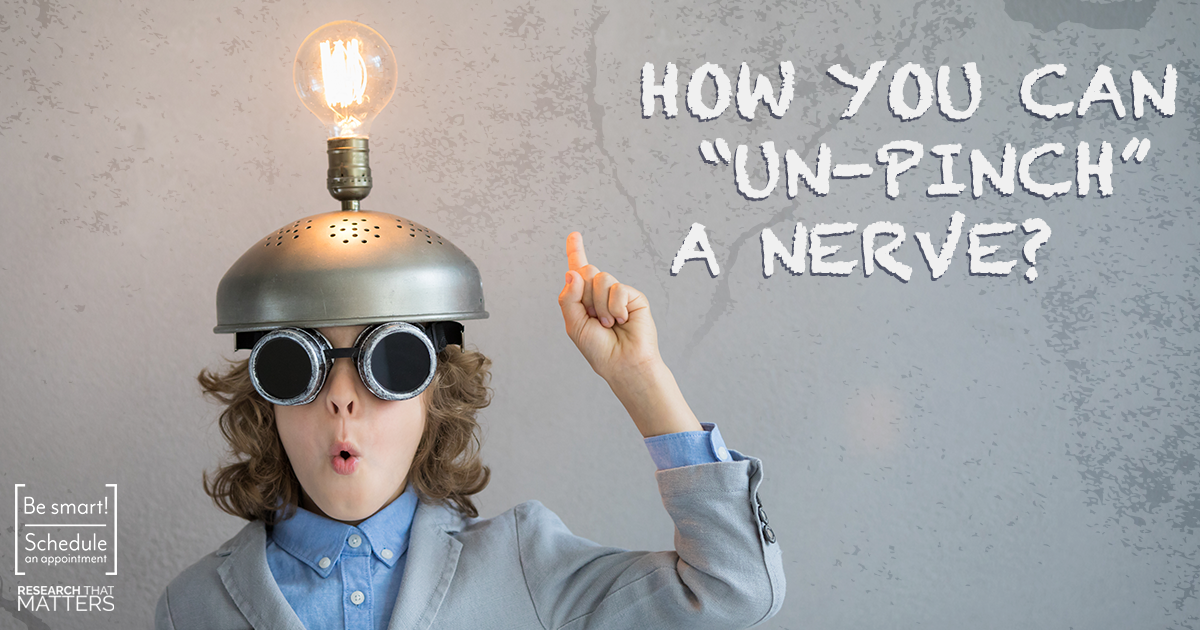How You Can “Un-Pinch” a Nerve
September 20, 2017

Bottom Line:
Pinched nerves are not exactly what most people would call a good time. A pinched or compressed nerve can cause pain, numbness, tingling, or weakness in your arm or leg. It can be debilitating! When the nerves are leaving your spinal column they have very little protection. And if a disc, ligament, or bone spur get near a nerve…ouch! The pain can start there and then travel the entire length of that nerve root resulting in pain that radiates into your arms and legs. Let’s just say that your nerves don’t like being pushed around.
Why it Matters:
The good news is that you can experience a lot of relief by taking the pressure off of the nerves. Research has shown that chiropractic adjustments can help reduce the pinching or compression on those delicate nerves roots. And with less pressure on the nerve, you can finally find relief.
– Your nerves communicate with every organ, tissue, and cell in your body
– Bone spurs, ligament overgrowth, or disc problems can cause pressure on these nerves
– Adjustments gently open the holes, or canals, of your spine, thereby decreasing the pressure on the nerves to help you function and feel better!
Next Steps:
Take a look around and do some “people watching” today. You will see that many people walk crooked or bent over towards one side. Sometimes this is the result of a pinched nerve. They are trying to lean away from the pain and open up those nerve channels. But, by staying active, maintaining a full range of motion, and getting periodic chiropractic care- you can count on standing tall for years to come!
Science Source:
Cervical radiculopathy: a systematic review on treatment by spinal manipulation and measurement with the Neck Disability Index. Journal of the Canadian Chiropractic Association 2012. Symptomatic, MRI Confirmed, Lumbar Disc Herniations: A Comparison of Outcomes Depending on the Type and Anatomical Axial Location of the Hernia in Patients Treated With High-Velocity, Low-Amplitude Spinal Manipulation. Journal of Manipulative and Physiological Therapeutics. 2016.
